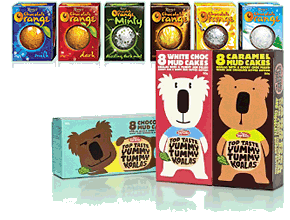One Playful Idea
Magazine article by John Matthews on the potential for playful brands
By John Matthews, Landor, 2010

The first thing to understand about play is that it's different from entertainment. Playful brands invite interaction and often initiate rituals.
Marketers tend to think ritual is the magic ticket-that if it can be created, consumers will wed a product for life. The problem is that ritual is often category generic. Take tequila: It's positively dripping in ritual, but people aren't shouting brand names at the barman at the end of the night.
Some brands succeed at creating a playful ritual of their own. One example is the U.K.'s iconic treat, Terry's Chocolate Orange. Boxed, foil wrapped, and segmented, the experience of opening and enjoying one is fussy, brilliant, and absolutely unique. The injunction "tap it and unwrap" is one of the U.K.'s most memorable straplines, and it works because it promises a deeply satisfying and playful product experience that is completely original.
In a world where advertising blurs into a sea of sameness with each big campaign a parody of the last, ideas that stick are a valuable commodity. Cadbury's Creme Egg uses one of those sticky ideas. Since the 1980s, it's been asking customers, “How do you eat yours?” acknowledging and celebrating the fact that we love to play with our food. The brilliance is that the concept is utterly Cadbury's. A gorilla can play drums for plenty of brands but a private label creme egg is a lame thing indeed. Playful brands create branded ideas, and branded ideas can't be replicated by private label, or by competitors.
Play doesn't have to be physical, either-a unique mental world is every bit as powerful. Working with George Weston Foods, Landor recently developed the Yummy Tummy Koalas brand, a range of boxed and individually packed cakes. The three flavours-Chocolate Mud Cake, White Choc Mud Cake, and Caramel Mud Cake-are each represented by a koala character; Bruce, Cath, and Kevin, respectively, whose likes and dislikes and vital stats grace the packs. Each box of cakes even includes stickers that customers can use to decorate and accessorise the koala characters, bringing their personalities to life. The brand invites a continued and ongoing interaction, before and even after the cakes have been eaten.
When brands succeed at being playful, powerful behavioural and psychological ties are created with consumers. The best also have another common characteristic. Think about Terry's Chocolate Orange, Cadbury's Creme Egg, and Yummy Tummy Koalas. Is it the product, the pack, or the promotion that makes each work? In each case it's the bigger concept (of playfulness) that unites product, pack, and promotion absolutely.
When there's an inherent big idea behind the brand, indelible impressions are created for consumers that can't effectively be imitated. That's what makes people come back again and again-they're loyal because they have no choice. Playful brands don't just add value for consumers, they deliver it to manufacturers.
The confectionery and cake categories obviously lend themselves to playful branding, but that doesn't mean other types of products can't learn from them. Every brand in every category ought to be searching for an ownable big idea. It just might take a bit of playing around to find it.
This article was first published in Australian grocery sector magazine
Retail World (19 July 2010).
 About the Author
About the Author
John Matthews is a strategist in Landor's Sydney office